May-June 2003
A Love That Forgives
By Anton Meemana
Anton Meemana’s article, Long day’s Journey into Light, appeared in Misyon in November-December 2001. He wrote there about growing up in Sri Lanka, how he became a Marxist, and how a Catholic nun helped him to come to the Philippines where he was eventually to discover Jesus Christ. Here he reflects on God’s love for him and the demands of that love.
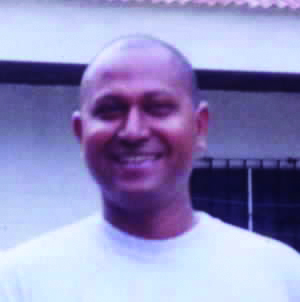
Anton
When I reflect on my 13 years in the Philippines there are certain things beyond any rational explanation. Why the Philippines? Why not Malaysia or Indonesia or Taiwan or some other country? I didn’t know a single Filipino when I arrived in 1989 and had only $ 250 in my pocket. How did I survive for thirteen years?
Mysterious Force
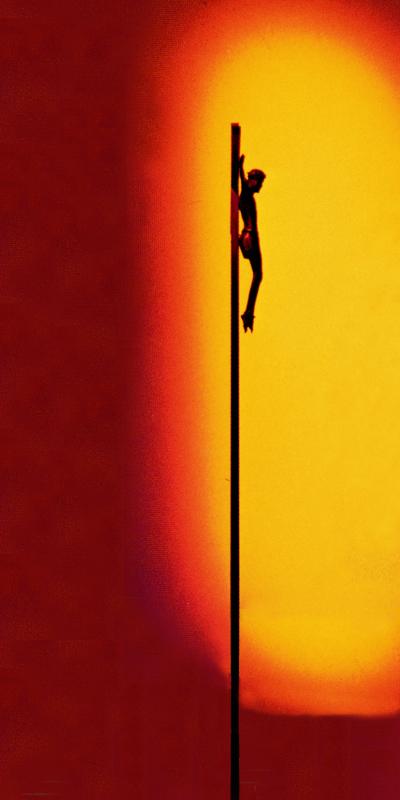 ">I experienced, of course, the goodness and hospitality of Filipinos but there is still something that I cannot fully grasp. There is some explanation beyond the human horizon. My experience is, firstly, that there is a mysterious force at work in our lives, call it whatever we will, God, Allah, Yahweh, that is nothing more and nothing less than Love. Love is the force that governs our destiny. Secondly, there is no person like Jesus of Nazareth. He alone is the Savior. He is the Lord of Life. He died exactly the way he lived. He lived loving people and died loving people. My real understanding of Jesus came through his death: why he died and how he died.
">I experienced, of course, the goodness and hospitality of Filipinos but there is still something that I cannot fully grasp. There is some explanation beyond the human horizon. My experience is, firstly, that there is a mysterious force at work in our lives, call it whatever we will, God, Allah, Yahweh, that is nothing more and nothing less than Love. Love is the force that governs our destiny. Secondly, there is no person like Jesus of Nazareth. He alone is the Savior. He is the Lord of Life. He died exactly the way he lived. He lived loving people and died loving people. My real understanding of Jesus came through his death: why he died and how he died.
Struggle to Forgive
To be a follower of Jesus is a demanding and life-long process. For me, the most difficult struggle was with my understanding of forgiveness. There was a time I wanted to take revenge on certain persons. I wanted to swim in their blood, to drink their blood – I don’t know how to say it.
In my early teens I was captured and gang-raped by a group of men, some of them soldiers. I resisted at first but there was no way I could overpower them. So I surrendered. Life has never been the same since that awful happening. I made sure nobody would know about it, especially my family. I felt guilty, wretched and filthy and lost my sense of dignity and self-worth.
The only way out
I was able to bury that painful memory until I watched the The Prince of Tides in 1992. The whole incident resurfaced and emotional floodgates opened. It’s hard to describe the agony I’ve been going through ever since. But I know that forgiveness, especially of one’s enemies, is the heart of the Gospel message. It’s also the most difficult part of the Gospel. I don’t have the unconditional love of Jesus. But this much I can say today: I will not take revenge on those who violated me. I will not kill them if I happen to meet them. I have forgiven them, though with great difficulty. I want my forgiveness to be real. If it were easy it would be meaningless. Even from my grave I will forgive them. To live is to forgive. To live fully is to forgive perpetually. The world will be saved by forgiveness and Christianity is the religion of forgiveness.
I also came to the realization that to take revenge on others is, paradoxically, to take revenge on myself. If I kill my enemy I become like my enemy. There has to be another way out: Christianity is that way out.
Engkag: A Quiet Man Of Mindanao
By Sr Ita Hannaway SSC
To be in Engkag’s company for any length of time is to be called to inner quietness. In all the eight years I’ve known him I have never seen him lose his serenity, even when circumstances were treating him harshly, as they often did.
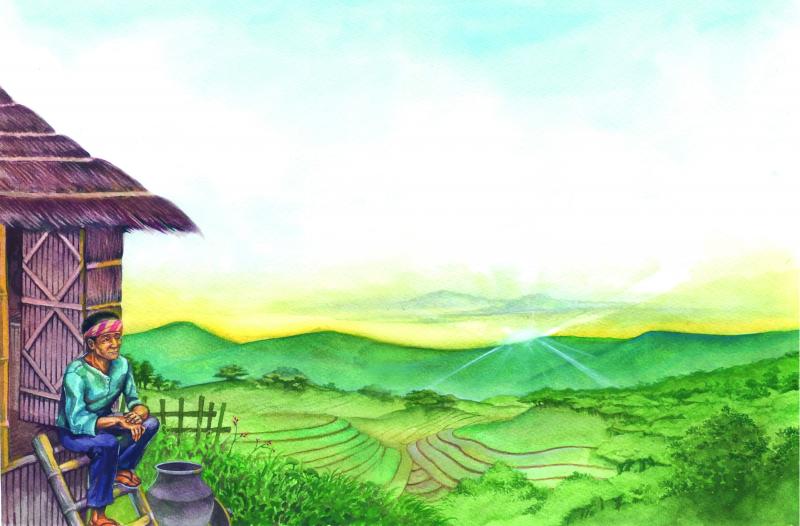
Tribal leader
Engkag Pangpang is a Subaanen beli’an, ie, cultural and religious leader of the tribal people to which he belongs. True to the nature of his calling, he is gifted with the power of prayer, of healing, of judging and of what I call “seeing.” In the district where he lives, it is he who is called upon to carry out the rituals or ceremonies which, as part of Subaanen culture, accompany the people’s lives from birth through death.
Meaningful ritual
Suk Penagay, which greets the new baby three days after its birth, or at the latest before it is taken outside the house; Su Kanubata, the great ritual which prepares the child for life as a Subaanen; Sug bela’i, the beautiful wedding ceremony that proceeds through many symbolic stages during the night until the happy bride and groom reach their new residence; Sungak Pekanu dingag Minatay, the eight rituals that begin when a Subaanen dies and which end a year after the death.
In addition to the ceremonies relating to the lives of the people, there are also solemn rituals which accompany each step of caring for the land from the Pekanu Pailis, which precedes the clearing of the ground before planting, until the grand festivity of Beklug, the wonderful thanksgiving ceremony when harvesting is finished. Insofar as is possible, Engkag is present to officiate at these rites.
There when needed
As well as being available for the foregoing, he is called upon whenever his neighbors have serious trouble. It may be that a child has a recurrent illness, or there may be persistent disquiet in a home. Again, there may be a new house to be blessed before being occupied – whatever the need, the Subaanens know that their beli’an will help them.
Engkag knows every precious detail regarding the proper procedure for each ceremony. He is careful that each is carried out at the time appropriate to its purpose. I have seen him ready to bless a small house at dawn. Before night had gone he was standing apart, facing east, in order to see the very first thread of the new day’s light. Then he began the blessing. When he had finished the sun was just up, sending its rays through the trees to touch the new house – the signs that light, ie, goodness, would grace this new dwelling.
Tranquil spirit
What strikes one is the aura of quietness which surrounds his rituals. One senses God’s presence and is affected by Engkag’s reverence and quiet voice as he offers his prayers. At such times, too, his bearing takes on a certain formality, which conveys the sacredness of what he is about.
This beli’an is amongst the poorest of his tribe in the district of Midsalip where the Columban Sisters are missioned. He is often lacking in sufficient food and if he happens to procure the latter he will give the most of it to his grandchildren who, for a great part of every year, experience the scourge of hunger. He possesses a minimum of clothing. His little house contains virtually nothing apart from the space where he sits or sleeps. He treads very lightly on land which once was his but was given to new settlers together with deeds, etc. (Subaanens hold land as a tribe, not as private owners, hence their land may be treated as “free land” by the civil authorities.)
Sound of his silence
When Engkag visits it is to sit still at first, not demanding conversation yet certain that he is welcome. Later he will make known his errand if he has one. I have known him, in the morning after his wife’s burial, to come in and just sit quietly for several hours before making his way home. This was his way of dealing with his loss, or perhaps of accompanying in spirit the spirit of his wife as it set out on its journey to Baya, the place where, according to Subaanen belief, the spirits of the good will rest.
In the mission of living amongst the Subaanen tribal people, sharing with them, being enriched by their cultural beliefs while being respected for my own faith, I have, I believe, experienced much of the Kingdom of God of which each of us is a part.
Seeing what is beyond
Engkag, who would not call himself a Christian, has laid hold in his life of the heart of the Beatitudes. He exemplifies the poor in spirit, the meek, the merciful and the gentle of heart. I have said that he has a gift of seeing much more than is visible to most of us – that which would prove harmful and that which would be beneficial to the deep, personal well-being of his people. His reverence for life, in nature as well as in humanity, prompts me to believe that in them he sees something of the great grandeur of God.
Salamat sa Far East
Floods And Snow
By Sister Victoria Lerin FMM
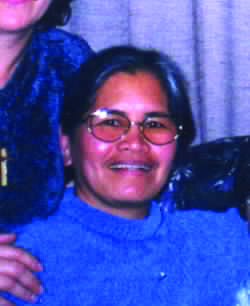 Floods were three meters deep after four days of ceaseless rain in Santiago, the capital of Chile, in June 2002. The worst hit areas were poorer sections of the city and nearby farms. Eleven people died and many suffered from diseases the floods brought in their wake. Farmers lost livestock.
Floods were three meters deep after four days of ceaseless rain in Santiago, the capital of Chile, in June 2002. The worst hit areas were poorer sections of the city and nearby farms. Eleven people died and many suffered from diseases the floods brought in their wake. Farmers lost livestock.
A similar flood occurred in 1926, perhaps the worst in the country’s history. Chile has developed since then, much more in the cities than in remote rural areas. Those who buy the fine wines and fruit the country exports are probably unaware of the many poor people who live behind Santiago’s imposing commercial buildings. As a foreigner, I don’t understand the complexities of Chile’s business life but I don’t think that the well being of the people is an overriding priority of those engaged in ruthless competition for the world’s markets. The politics are like those at home – dirty. And the rich still get richer and the poor poorer.
The cruel snow
While Santiago had its floods, we in Punta Arenas, in the southernmost part of Chile, had three days of continuous snow. As a Filipina I was excited seeing the all-pervading whiteness outside. The snow, too, was three meters deep. Despite my joy I was also preoccupied with the situation of the people in the nearby rural areas with their sheep and other livestock. Thanks be to God, nobody died but some houses were damaged by the weight of the snow on the rooftops. The below-zero temperature caused great suffering and people lived in fear of La Blanca Terremoto, “The White Earthquake,” of 1994 returning. Then it snowed for a week and many flocks of sheep perished, the shepherds helpless. On both occasions the religious of the area helped those most affected by providing them with food, clothing and money and above all by their presence, with words of comfort and hope.
Our ministry
Our Franciscan Missionaries of Mary community gives catechetical formation to lay leaders both in the centro and in distant barrios. With some lay leaders I visit the sick, parishioners with disabilities, those with no voice, the very poor, and old people who live alone. We bring not only our presence but also the Word of God and the Bread of Life. Jesus, who made bread our food for eternal life.
I’ve been in Punta Arenas nearly three years now and the Lord, by his grace, has helped me adapt to the climate and culture. I’m still adjusting, but the fact that I’m surviving assures me of God’s love.
With some lay leaders I visit the sick, parishioners with disabilities, those with no voice, the very poor, and old people who live alone. We bring not only our presence but also the Word of God and the Bread of Life. Jesus, who made bread our food for eternal life.
I’ve been in Punta Arenas nearly three years now and the Lord, by his grace, has helped me adapt to the climate and culture. I’m still adjusting, but the fact that I’m surviving assures me of God’s love.
From Killaloe To Iba
By Fr Donal O’Dea SSC
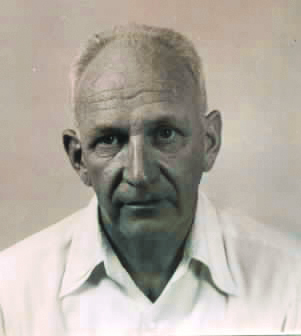
My vocation journey was in many ways prosaic and began during my high school years, 1940 to 1945. There was a surge of vocations to the priesthood in Ireland at that time, especially for the missions. You certainly weren’t fighting against the current – and jobs were scarce!
Religious Background
Family-wise, we had strong ties with the clergy and religious. Two of my father’s brothers were priests in our Diocese of Killaloe. A sister of my mother was a nun, working at that time in the Outer Hebrides in Scotland. Her brother had spent a year as a seminarian in the Columbans, a classmate of the late Father Aedan McGrath (Misyon cover story, Jan-Feb 1999.) We also got Far East, the Irish Columban magazine.
It seemed to me a normal thing to have the desire to be a priest. I could say that this was encouraged – certainly not discouraged – by my older brother in the National Seminary and my oldest sister who joined the Columban Sisters in 1945. Six of us went from St Flannan’s, the diocesan high school seminary, to Dalgan Park, the Columban seminary. One left and died later of tuberculosis while the rest of us were ordained in December 1951.
Apprehensions
My struggle with my vocation came in my later years in Dalgan. I had to make a major decision. I felt an urge to leave and try something else. The real urge was to be free from the challenge of the priesthood, celibacy and, more so, the public commitment to be a leader and teacher, and the life that called for. I feared all this.
The seminary at the time offered little real help in my struggle. I think I hoped that someone would tell me to leave. I was under no pressure from my family or anyone else to stay.
The Road Less Traveled
Ordination day was not the happiest of my life. In hindsight, I see it as probably the first day of my life. I made the decision to be a priest, to trust in the Lord’s call, after ordination, even if this seemed a little strange. The difficulty of making and facing decisions always remained, but you have to live with yourself.
I was sent to Zambales in 1953. My first parish was Sta. Cruz, where Zambal is spoken. My pastor was Fr John Moran, an American and a decent man. I never had much trouble with the language or food and slowly began what is now a journey of memories, both of the Columbans and of the people of this area, which I cherish and would not have missed. The struggles and low points didn’t evaporate, but I always knew that people, especially at home, were praying for me.
Happy Where I am
Right now I work with the Indigenous People’s Apostolate of the Diocese of Iba. We have a large population of Aetas, about 18,000, displaced by the eruption of Mt Pinatubo in 1991. I began this work in 1993 after having spent all my previous years in the diocese in pastoral work in various parishes. To take this job was a major decision at the time, a new beginning. But a happy one.
Linkages Of Love
By Sister Josefina Estremera DC
On April 20, 1999, a fishing boat from Mindoro was wrecked during a storm. On board were the fishermen and some family members. Pepito Mateo and his son Jimmy survived by clinging to a bamboo pole for three days and nights till rescued by a Taiwanese ship. The Singaporean skipper and Filipino crew took care of the two until they docked five days later in Pattaya, Thailand’s popular tourist resort.
Two of the Philippine Embassy staff met Pepito and Jimmy and immediately took them to the Camillian Hospital in Bangkok. They were badly sun burnt. Jimmy had small wounds caused by fish bites all over his legs and Pepito had a large wound on his right foot from being struck by a plank.
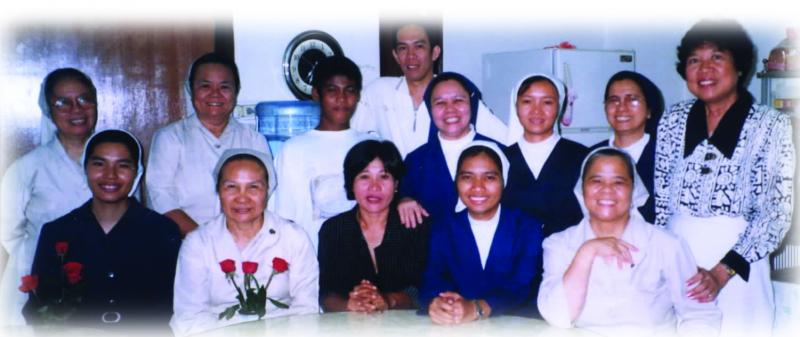
Jimmy was an outpatient and stayed at the embassy. Pepito was told he needed surgery and during his three weeks’ confinement met another Filipino patient, Sr Karuna Placino DC, recovering from a gallbladder operation. Among the friends of the Daughters of Charity who visited both patients was Ms Remedios Macaraeg of the embassy staff. She belongs to the Association of International Charities (AIC), connected with the Daughters of Charity. Mr. Mateo opted to have further treatment in the Philippines. The Sisters arranged for this in San Juan de Dios Hospital in Manila, run by their congregation, and the embassy provided tickets. By chance, three Thai novices of the Daughters of Charity were on the same flight, on their way to an inter-Asian meeting of young religious, and one Sister going on a home visit. Pepito and Jimmy were deeply touched when seen off by the rest of the Sisters and the embassy staff. The Sisters had also arranged for transport from NAIA to the hospital.
God’s loving providence showed itself abundantly in protecting the two survivors and moved the hearts of many. They got into Thailand without visas. Their situation mobilized others to help them improve their lives. A member of the AIC pledged to send Jimmy to the high school of the Daughters of Charity in his hometown, San Jose, Occidental Mindoro. Can we call this coincidence? If we say that nothing happens by chance, then were this father and son chosen to be survivors for a mission? Their situation evoked love in a foreign land and created effective linkages between people who saw above all the dignity of the person.
Little Ivy’s Mission
By Anna Bocar
On July 28, 1993, I lost my beloved daughter Ivy. She was two months short of three and the younger sister of Analou, who had just turned nine. They had gone to the house of my cousin Bernardo to play with his baby. Bernardo had just arrived in our place in Mindanao from Cebu and was drinking with some friends. When my children arrived he was already drunk and possibly under the influence of illegal drugs also. He was showing a gun he had brought with him to his buddies.
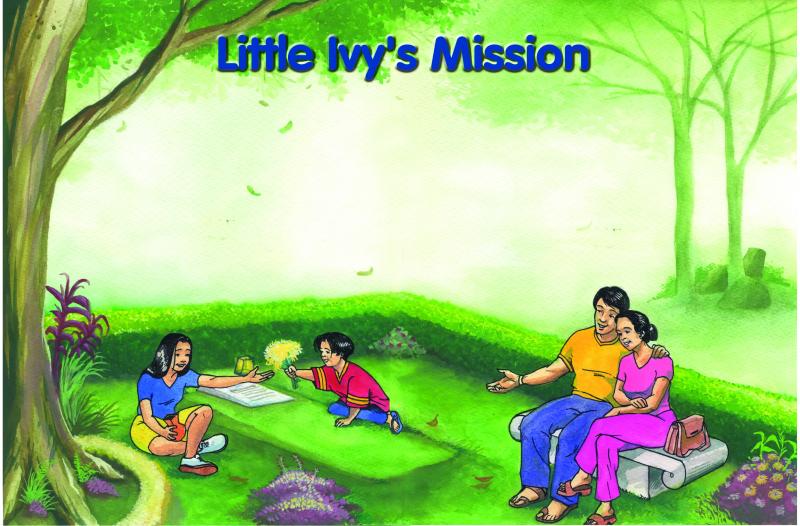
Dangerous joke
Analou told me later that Ivy approached her uncle and asked him for a peso. Instead of giving her money he jokingly pointed the gun at her and asked, “Is this what you want?” Ivy, too young to be aware of the danger involved, grabbed the gun. Bernardo tried to pull it from her, not realizing that he was pulling the trigger too. A shot rang out.
Ivy didn’t fall right away. Only a little blood could be seen on her dress and the bullet didn’t exit from her body. It didn’t even show on the x-ray. The doctor’s report indicated that it had gone through her internal organs.
Mother’s anguish
The pain was unbearable for me as Ivy’s mother. No words could describe the anguish my husband, Manolo, and I went through. I wanted revenge. My cousin owed me a life. I wanted him to pay with his own.
I filed a case against him. He was sentenced to eight-to-twelve years for homicide and four for the illegal possession of arms. He is now at San Ramon Penal Colony in Zamboanga.
Shattered dreams
For three long years I suffered without respite, crying myself to sleep almost every night. I thought at first that I couldn’t bear it, to the point where I wanted to take my own life. I had loved Ivy so much. She was such a gentle and respectful child, so very cheerful and intelligent. I’d had so many dreams for my beautiful daughter, now all dashed. I tried to get through each weary day after weary day.
To rest in His arms
Then I got tired of it all. I wanted to leave the pain behind. I wanted peace. I found myself submitting to God. I realized that there could be no peace unless God was in me. I decided to leave everything to him.
It’s nearly ten years now since that tragic incident and God has taught me how to depend on him every step of the way. When I had all my cares at his feet he brought me blessings I never thought I deserved. The greatest of these was our son and Analou’s brother, Manolo Ivy. He carries the name of his father and of our Little Angel and helps me remember Ivy and smile, “Ivo,” as we call him, is now nearly nine.
Struggle to forgive
A few months after he went to prison Bernardo wrote and asked me to forgive him. This is something I’m still struggling with. I’ve never visited him in the penal colony nor contacted him. I’m only human. Yet I ask myself, if God can forgive, why can’t I? Perhaps it’s the mission of Little Ivy, now in the presence of God, to obtain for me the grace to let go of everything and forgive Bernardo.
New World Disorder
By Eduardo Galeano
This is an edited version of an address given by the Uruguayan journalist to the World Congress of Christian Communicators. The original appeared in Spanish in Pastoral Popular.
Today’s world, under the symmetrical totalitarianism imposed by the World Bank, the International Monetary Fund and the like, is a world without a soul, a world with no people, only markets; no citizens, only consumers; no nations, only business empires; no human relations, only mercantile competition.
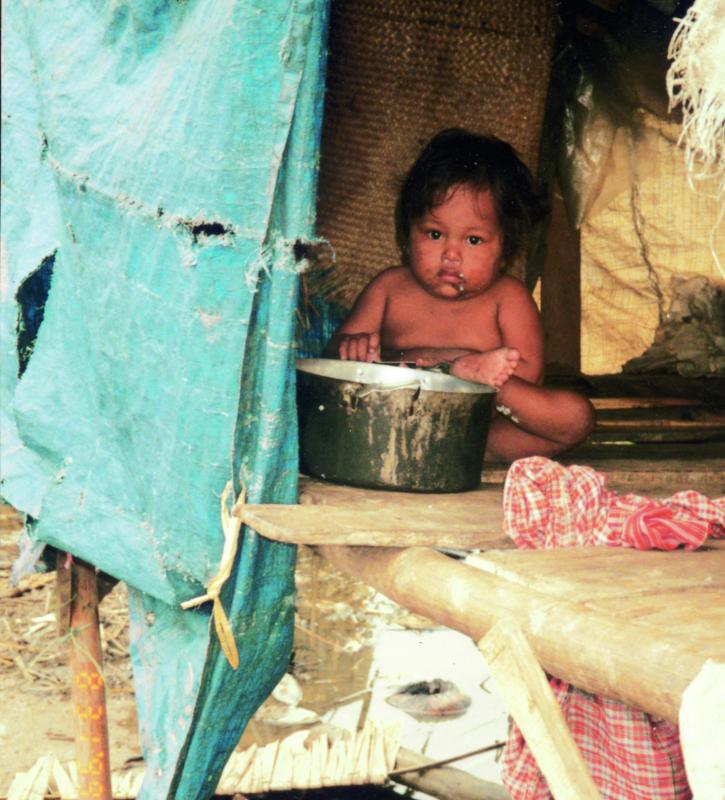
Unjust economy
The world economy has never been less democratic or more scandalously unjust. In 1960 the richest 20 percent of the world was thirty times richer than the bottom 20. By 1990 the difference was sixty times. The top 100 multimillionaires as listed in Forbes and Fortune, privately own as much wealth as 1,500 million people.
The cultural leveling and destruction taking place as a result of this cannot be as easily measured. Advanced electronic media to a great part serve only human non-communication and impose the values of the consumer society and the choice between the same and more of the same. The media are owned by an all-powerful few. History is swept away and individual identity destroyed. Never have so many been rendered voiceless by so few. The ideal citizen is the docile consumer, the passive spectator mass-produced on a planetary scale according to the blueprint of North American television ads. The entire globe has been conquered by this mortal cocktail of blood, valium and publicity.
How does this process of cultural leveling function in an increasingly unequal world? There are two paradoxes. First paradox: the world economy needs an ever-expanding market so that profits do not fall. It also needs hands to work at the cheapest prices in the South and East of the planet.
Influence of Media
Second paradox and daughter of the first: the Northern part of the world increasingly issues stern orders to the South and East to multiply consumers. This multiplies delinquency. For example, millions of young Latin Americans are condemned to unemployment and starvation wages. Television ads proclaim that the one who doesn’t have a certain kind of car, or trainers, or whatever, is a nobody, rubbish. Every thief who gets hold of the things which supposedly give a person life want to become like his victim. Television not only teaches one to confuse quality of life with having a quantity of things but also offers daily audio-visual courses in violence, courses complimented by video games. Crime is the biggest attraction of the small screen. “Get them before they get you” is the message of the video games.
The loaves and the fishes have never been more unevenly distributed. The antiseptically named “market economy” is allowed to act with ever greater impunity. Up until 20 or 30 years ago poverty was seen as the fruit of injustice, denounced by the Left, admitted by the Center and rarely denied by the Right. Now it is the punishment for inefficiency or merely an expression of the natural order of things. Poverty has now been separated from injustice. Even the notion of injustice, something universally accepted in the recent past, has been so modified that it almost disappears.
Few winners, many losers
Today’s moral code condemns not injustice, but failure. Robert McNamara, one of those responsible for the Vietnam War, recognized in his book, In Retrospect, that this war, which killed 3,000,000 Vietnamese and 58,000 Americans, was a mistake, not because it was unjust, but because it could not be won. The fact that an invading force was annihilating a people and destroying their land in order to impose on Vietnam a government it did not want is not questioned. Within a reward/punishment system that sees life as a merciless race between few winners and many losers, defeat is the only sin that has no redemption.
The same thing happens with violence as with poverty. It is rarely presented as the result of injustice. It’s almost always exhibited as the result of the bad conduct of those third-class types of people who inhabit the so-called Third World. Isn’t it part of their nature! Violence, like poverty, is attributed to the natural order.
Black and white
When McNamara published his book another scandal rocked public opinion in the USA. A Guatemalan colonel and functionary of the CIA was accused of murdering a US citizen. The media gave little importance to the fact that the CIA had been financing assassins and imposing and deposing governments in Guatemala since 1954. That year President Eisenhower approved the CIA’s organizing a coup that overthrew the democratic government of Jacobo Arbena. President Clinton ordered an investigation into these two cases but not into the responsibility of the CIA and other government agencies for the systematic butchery that has caused the deaths of a hundred thousand Guatemalans in recent years, most of them indigenous peoples. This bloodbath, usually explained away as something almost natural, was, for a time, the focus of media attention. This helped the cause of human rights in Guatemala but also confirmed the racist discrimination that rules world “disinformation”
The market that offers gleaming cars, exotic soaps, exciting perfumes and magic painkillers, hypnotizes the consuming public through the small screen. But now and again between ads the television shows images of hunger and war. These horrors belong to another world where hell exists. The contrast only underlines the paradisiacal quality of the consumer society and all it has to offer us.
Conditioning violence
Often these images come from Africa where famines are shown as natural catastrophes. The wars of Africa never show confrontations between peoples and regions, but tribes. It’s the blacks, you see! The footage on hunger doesn’t even mention in passing the pillage of colonialism that yesterday promoted slaver and today slave-wages. There’s silence about the same colonial powers that invented false frontiers and chopped up Africa into more than fifty pieces. There’s silence about the traffickers of death from the North who sell their arms so that the South might make its wars.
The 1994 war in Rwanda provided the most atrocious images of human butchery in recent times. No reference, even by chance, to the responsibilities of Germany, Belgium or France that, one after the other, helped destroy the tradition of tolerance between Tutsis and Hutus, two peoples who had lived peacefully side by side for many centuries before they were trained for mutual extermination.
Powerful tyrants
The lords of information give the name communication to their monologue of power. Universal liberty of expression consists in the right of the suburbs of the world to obey the orders that the center sends out and to take as their own the values that it imposes. There are no frontiers in this supermarket of global dimensions where control is exercised on a planetary scale.
This is the treacherous mirror that teaches Latin American children to see themselves through the eyes of those who despise them and to accept as their destiny the reality that humiliates them. UNESCO statistics say that these children spend twice as much time watching television as they do in attending class. But what about those cases where the hours watching television are, in fact, their “school” hours? Public education and health-care have been dismantled by the hurricane of neo-liberalism and the disintegration of the Latin American state. Education is the privilege of those who can pay. The TV looks after the rest.
The crushing force of this “non-communication” that un-educates us underlines the dimensions of the challenge we are facing. The struggle is unequal but more necessary than ever now that the fashion of the times orders us to harness ourselves with hope as if we were talking about a tired horse.
Salamat sa Far East
Our Hideaway

A venue for the youth to express themselves and to share
with our readers their mind, their heart and their soul. We are inviting you –
students and young professionals – to drop by Our Hideaway
and let us know how you are doing.
Valuables
By Francis John Chua
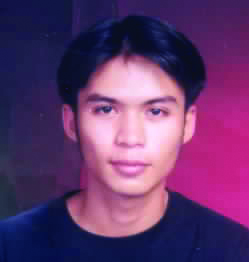
I was in grade four when I first gained a sense of personhood, with my own thoughts and understanding, making my own decisions. That’s when I started to realize that everyone’s life, including mine, has value and significance. It was a real pleasure for me to converse with others, young or old, especially if I discovered that they had achieved something in life. I journeyed through those years grateful that I was surrounded by persons I valued and appreciated.
Shocking discovery
When I entered high school I observed some changes from my younger years. I expected some of these but couldn’t believe what I saw one day when I was in fourth year, a close friend of mine shouting at a lady…a mother…his own mother!
I turned away, embarrassed at being caught in a private affair, shocked at what I had seen. I couldn’t bring myself to talk to my friend about the incident when I met him later and pretended to forget it.
Formation in values
Three days later our class had a retreat. We reflected on h ow we followed Jesus in our daily life. I wondered if my friend had realized what he had done to his mother, the one person who would be there for him no matter what happened. I presumed he still needed some enlightenment.
The two most important persons
There was silence in the heart of each of us on the retreat and I could hear a voice echoing faintly in my mind, “After you’ve said good things to your friends and
barkada, after you’ve declared romantic pledges to your girlfriends and boyfriends, do you ever take time to say, “Mom, I love you,” ‘Dad, I love you”? They’ll be gone someday.”
I couldn’t help but cry and cry. It was the moment I realized I showed more devotion to my friends than to my family. I gave value to almost everyone I encountered each day, but a single ‘I love you’ for the most important persons in my life never passed my lips.
Enriched
After that I got the courage to talk to my close friend. We shared our feelings, especially about that incident. I was happy when he opened up and we ended up crying together.
Indeed, it was an unforgettable moment. It reminded me of the value of not just other persons but most of all my family. This is what I would like my own generation to know. We only realize our parents’ worth when we lose them. We can only blame ourselves for being late in doing the things we should have done when we had the chance.
Paraguayan “Barquillos”
By Sr Amelia Bublo SSpS
I first set foot on Paraguayan soil on July 26, 1986, the feast of Sts Joachim and Anne. Next day I was invited to the blessing of a new Benedictine monastery in Misiones, a four-hour drive from Asunción, the capital. Despite my jet lag I left at 3:30 am with the other sisters. I couldn’t argue with them, as the only Spanish I knew was “Si” and “No.”
Nine bishops from Argentina, Brazil and Paraguay itself concelebrated Mass on this grand occasion. I didn’t understand a word but followed the advice given to new missionaries everywhere, “Observe and keep silent.” Shortly after that I went to another town, nine hours away. We were attending the wake of a student who’d had a tragic death. There was no electricity there so the people used candles or petromax and kerosene lamps.
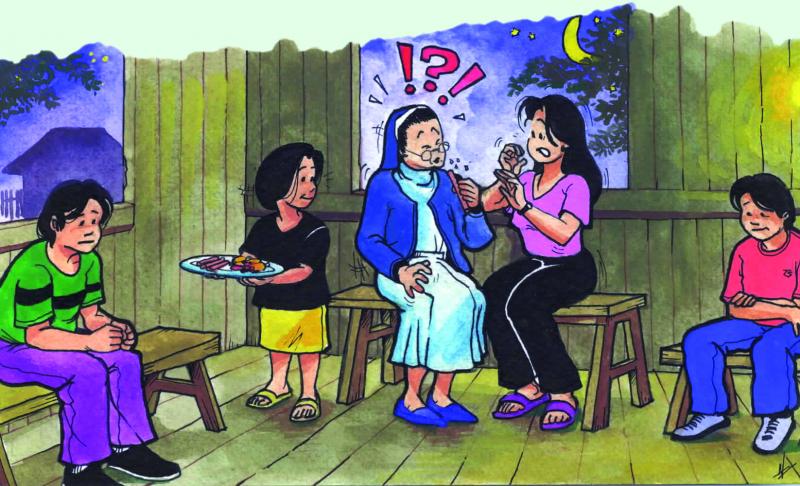
The house was very quiet despite the large crowd. The candles around the coffin lit up the whole room. After the Rosary I stayed in a corner with a young girl who worked in our house. Plates with candles, cookies and barquillos were passed around. The first and second time I excused myself with, “Gracias, estoy satisfecha tovadia,” “Thank you, I’m full.” My companion whispered to me, “Sister, it’s our custom to accept whatever is offered.” The third time I took a barquillo, as I thought. To my surprise, it tasted bitter and smelled of tobacco! I turned to the girl and asked her, “What kind ofbarquillo is this?” She smelled it and declared, “Sister, it’s a cigar!” We had to escape to the backyard to have a good laugh at my mistake!
This was but one of many instances where my limited knowledge of the culture and language led me to other such embarrassing but funny situations. It’s all part of being a missionary.
Say, ‘Cheese!’
By Cynthia Empleo
Cynthia Empleo is one of six Filipino Columban Lay Missionaries sent to Fiji in 2000. Before they were assigned to different parishes, they made regular visits to various institutions to practice the local language. This was also their first apostolate. Cynthia was assigned to Vale Levu Hearts Home, a low-cost housing projects started by the late Columban Father Dermot Hurley. Local nuns now run it.
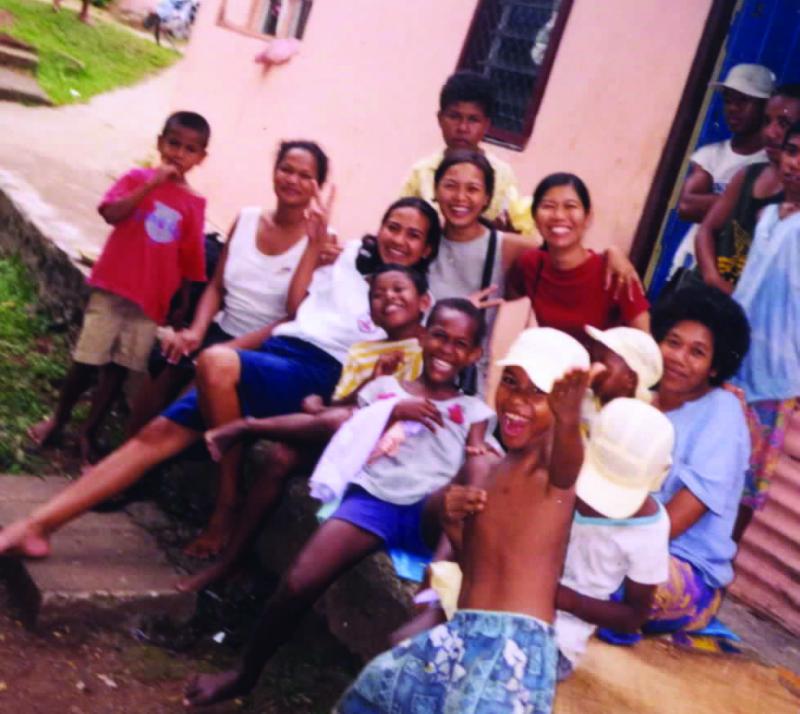
The film count said 20. I had taken some precious shots the previous week and was frantic to finish the roll. A few more shots, and I could bring it to the camera shop. But then, it was Sunday! Almost everything closes in Fiji come Saturday afternoon and the whole of Sunday, except for a few Chinese stores and the Big Cinema. I’m really impressed by the way Fijians respect the Lord’s Day. Anyway, I thought I could just bring my camera to Vale Levu and finish the shots there. The kids were more than willing to pose with me and Jennifer “Ifer” Chan, another lay missionary. We finished the remaining shots while they were playing and resting in the shade. One marama (lady) asked me to take a shot of her ailing husband. She feared he wouldn’t last long. I took the remaining shots with them and the neighbors joined in. It was a happy mess. Even the sick husband was very cooperative. I promised to bring them copies the following Sunday.
Broken promise
The next Sunday was a busy one for we were finishing our language study and a retreat was coming up. I forgot all about the pictures. The children asked once or twice and I felt bad about not having fulfilled my promise. The following Sunday I made sure I had them in my backpack. When I showed the photos, the children just loved them and were jumping up and down. They crawled over my small frame just to have a peep at themselves. It was fun looking at the glowing faces of the mothers as they tried to find their children’s faces in the pictures. Young girls boasted that they had been sitting beside me or holding my hand. I never experienced such reactions before.
Unexpected reactions
I was so surprised by the impact of the pictures. Usually the people were reserved while talking to me. It was even hard for me to start a conversation with them. They just shied away. I never realized how much photographs meant to them. Some were even requesting a family picture with me. One mother was teary-eyed thanking me while holding her daughter’s picture to her breast. I really felt strange but was happy all the same.
This little black box changed and affected my ministry – because it captured what it saw. All my life I’ve been carrying cameras for special moments I wanted to capture, but it had never been this precious.
Film is very expensive in Fiji, not to mention the cost of even a modest camera. These people are poor, very poor, and photographs are the last they would think of including in their daily budget. They might even grow old and die without a family picture to keep, to look at, or to use when telling stories. I thank God for making me an instrument in bringing the simple joy of a photo of themselves to these simple people.
Tazama…look at these happy faces!
By Sr Mary Ignatius C Aquino OSB
Sister Ignatius, who has written before in these pages, tells of her experience in forming the first Tanzanian members of the Missionary Benedictine Sisters of Tutzing. This congregation, founded near Munich, Germany, opened missions in the Philippines and in Tanzania in 1906.
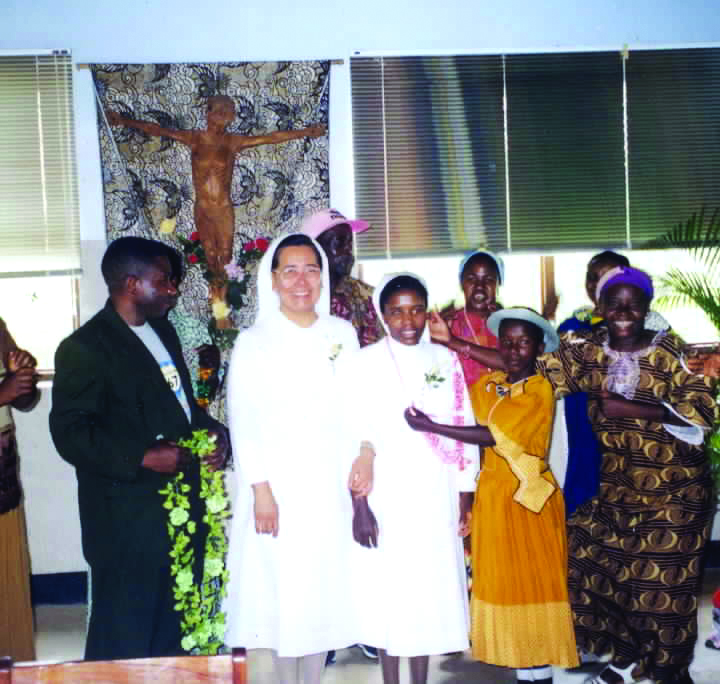
Seven years as a formator at Ndanda Priory, Mtwara, Tanzania that came swiftly to a graceful end. I came on 13 June 1995. I noticed on my arrival from Dar-es-Salaam, the capital of this East African country, that it was like an oasis in this dry, hot and bushy village. This area has been under the jurisdiction of the Benedictines since 1906. Both Benedictine monks and the Missionary Benedictine Sisters of Tutzing work here. The Ndanda Mission has provided health care and educational development throughout Tanzania through its large hospital and secondary school and a housing complex for doctors, teachers and staff.
Most of the Sisters in Ndanda are Europeans in their 60s, 70s and 80s. It took almost a century to open the door to Tanzanians. Since 1995 we’ve had seven Junior Sisters from the Ndanda Priory Novitiate. Their radiant, happy faced added to the joy of the First Profession of two novices on 12 October 2002.
Formation is a gradual process of transformation into Christ. As I look closely at those faces, including my own, I am delighted at the marvels the Lord has done to our young Sisters and to me. We started like children learning to walk, I in a foreign land and they as beginners in the ‘School of the Lord’s Service.’ It was our Lord Jesus Christ, the Formator par excellence, who led us all along: in sickness and in health, in poverty and in abundance, in failure and in success, in losses and in gains, in tears and in joy. Yes, God accompanied and loved each of us all the way through.
Leaving Ndanda Priory, my heart is full of peace and happiness as I see the seven young Tanzanian Junior Sisters ready and joyful in committing themselves to our Missionary Benedictine way of life. With these seven seeds that have sprouted and are gradually unfolding into what God has intended, we go forth to draw all peoples towards God as we pray, live and work in common.
My missionary service continues in Los Toldos, Argentina. This assignment evoked in me an awesome wonder as the thought of going to this South American country had been lingering in my mind in Ndanda. One day, while I was at Chem-Chem, a water spring, I said to one of the novices, ‘My next foreign assignment will be Argentina.’ When Mother General Irene Dabalus OSB, the first Filipino in that post, subsequently missioned me to Los Toldos, I felt as if a mysterious event had happened to me. May I faithfully live this mystery!
The Drama Of Padre Pio
Based on an article by John Cornwell
Padre Pio was canonized on June 16, 2002. He died on September 23, 1968. John Cornwell’s article, upon which this is based, appeared in The Tablet, the international Catholic weekly,www.thetablet.co.uk
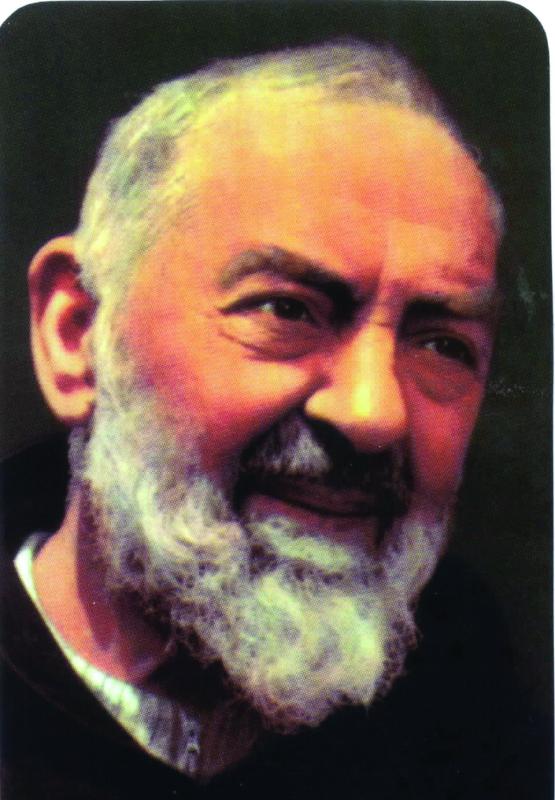
Padre Pio
Devotees of Padre Pio say that his life proved that God intervenes directly in human affairs. He was a deeply religious child and believed he had visionary experiences of angels and conversations with Jesus and Mary. He heard heavenly choirs and believed he was harassed by “assaults of the devil.”
First Miracle Witnessed
A miraculous event in August 1895, when he was eight, profoundly affected him. His father took him to the shrine of San Pellegrino where a great crowd of pilgrims stood before his statue, waiting for miraculous healings. A “raging, disheveled” woman started to scream and pushed her way to the front. She held her child who had a huge, hydrocephalic head and shrunken, paralyzed limbs. The child could only squawk “like a crow.” The mother threw herself on the ground, asking ceaselessly for a miracle. She began to abuse the saint, screaming and cursing. Pio’s father decided to go but the boy stayed on, against his fathers wishes, earnestly praying for a miracle.
The mother hurled the child at the statue screaming, “Keep him! He’s all yours.” The baby bounced off the statue, hit his head on the marble floor with a loud thud and stood up, completely healed, running towards the woman, calling out , “Mother, mother!”
Pio associated the healing with his own prayer, rather than the efficacy of the saint, and saw the defiance of his father’s wishes as an important element: he was already about his real Father’s business.
His interior life
Born Francesco Forgione and one of five children, he grew up determined to be a Franciscan priest. He entered the Capuchin Franciscan seminary at 15 after a spotty education and was ordained eight years later. His superiors found him a problem from the start. He practiced excessive self-denial and fasting and long hours in private prayer. He was often sick with migraine, very high temperatures, constipation and vomiting. He slipped into ecstasies and sometimes took two hours to celebrate Mass.
His frequent illnesses gave him more solitude and further opportunities to pursue his intense interior life. At one stage he spent months living alone in a tower. Neighbors talked of crashes, bangs and shouts like “drunken brawls.” Pio confirmed later that he had been in dire struggles with demons that “struck me violently and threw pillows, books and chairs through the air and cursed me with exceedingly filthy words.”
Willing Victim
Called up for army service in World War One, he went AWOL. His spiritual director had him removed to a remote friary at San Giovanni Rotundo. There his mystical life deepened. Its focus was a powerful dedication of himself as victim, to suffer with Christ on behalf of others. At times this seemed to go beyond the norms of even the most radical expressions of spirituality. “Punish me and not others, even send me to hell, provided that I can still love you and everyone else is saved.” His visions seemed to be of two kinds, those that fell within a rigorous peasant tradition and those that approached the classic high mysticism of St Teresa of Avila and St John of the Cross.
Pio wrote accounts of jocular and scolding conversations with his guardian angel whom he referred to as “my boy.” He wrote too, “My ordinary way of praying is this: hardly do I begin to pray than at once I feel my soul begin to recollect itself in a peace and tranquility that I cannot express in words. The senses seem suspended.” He describes a vision of Christ in which “the Lord immersed my soul in such peace and contentment, that all the sweetest delights of this world, even if they were doubled, paled in comparison to even a drop of this blessedness.”
However, it seems that for the most part Pio’s spiritual life was subject to a long chain of afflictions, both physical and psychological. He had a mystical experience where a fiery weapon delivered a “mortal wound in the depths of my soul, a wound that is always open and which causes me continual agony.” His spiritual director was convinced that Pio had been chosen by God as a “co-redeemer and victim.”
Self-offering
The phenomenon of the stigmata illustrates clearly the marriage of vivid traditional iconography and the deeper implications of Pio’s self-offering. For several years, he experienced incipient pains and visible symptoms. On September 20, 1918, when he was 31, he received the stigmata proper. The five wounds, in his hands, feet and side, opened up fully and poured with blood. He was to become the most famous male stigmatic since St Francis in the 13th century.
Padre Pio wrote to his spiritual director about the great peace he felt at that time but he also told of the agony he experienced and continued to experience almost every day. The bleeding usually increased from Thursday evening till Saturday. “I am dying because of the wounds and the resulting embarrassment,” he wrote.
The phenomenon of the stigmata was to last for 50 years and drew both unwelcome adulation and aggressive skepticism. Many psychiatrists and physicians came over the years to San Giovanni Rotundo. Some declared that here was a genuine mystery to science. Others accused Pio of fraud, hysteria, self-hypnosis and even of being in league with the devil. Rumors and accusations persisted until the friar’s death.
Pio’s life was full of paradox and controversy. Despite the long periods of contemplative prayer each day he would also spend up to 12 hours in the confessional and doing other good works. Though his spirituality seemed unattainable, his attachment to familiar pieties kept him in touch with people. His saintliness was evident to most but he could be irreverent, brusque, sharp-tongued and comic. He lived enclosed in his friary, yet had an impressive grasp of what was going on in the local community, in Italy and around the world.
Italian Communists mocked him as “the richest friar in the world.” He opened a hospital that was free to the poor but insisted that it should be built with the finest materials. There were rumors of financial scandals. Rome was suspicious of his popularity: people flocked to him in their hundreds of thousands.
Thousands of Miracles
The number of miracles attributed to Padre Pio ran into thousands. On one occasion a brother friar claimed that Pio had visited him in hospital and healed him of a deadly illness when it was known that Padre Pio hadn’t been out of the friary. When his superior asked him if he bilocated Pio said, “Is there any doubt about it? Yes, I went, but don’t say anything to anyone.”
Those who confessed to Padre Pio would say that he “saw the whole of one’s life at a glance.” He sometimes got angry in the confessional, especially if he detected pride or mere curiosity or no evident purpose of amendment in one living in sin. He could send people away with an earful of abuse and without absolution and was known to slap faces and box ears.
Wounded Servant
The Mass was the high point of Padre Pio’s day at San Giovanni. He would rise at 2:30 am and prepare himself in prayer and meditation. The people would be let in at 5:30 and race for the best places, sometimes trampling on uninitiated pilgrims. There was a totally different atmosphere once Mass began. A brother friar wrote, “His Mass produced such an impression that time and space between the altar and Calvary disappeared. The Divine Host, raised by those pierced hands, made the faithful more aware of the mystical union between the offering priest and the eternal priest.” Padre Pio passed through fear, joy, sadness, anguish and pain and often his whole body was shaken by sobs.
He seemed to age prematurely and his physical suffering increased as he grew older. He was confined to a wheelchair. The stigmata began to disappear in the final year of his life and when he died on September 23, 1968, there was no sign of the wounds. Hundreds of thousands flocked to his funeral Mass, celebrated in the presence of cardinals and bishops. The perfume that had accompanied his stigmata filled the church where he had lain in state.
Pope John Paul decreed that September 23 be observed throughout the Church as an obligatory memorial of St Pio.
The Hand That Rocks The Cradle…
The Holy Father speaks to mothers
The fact can never be sufficiently stressed that woman must be appreciated in every area of her life. However, it must be recognized that, among the gifts and tasks proper to her, her vocation to motherhood stands out particularly clearly.
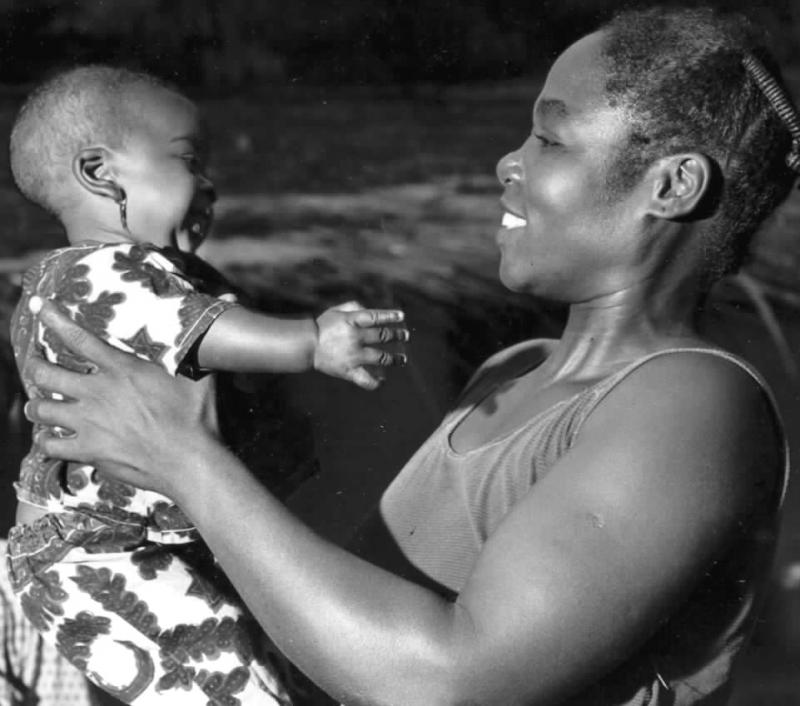
With this gift woman assumes almost a “foundational” role with regard to society. It is a role she shares with her husband but it is indisputable that nature has assigned to her the greater part. I wrote about this in Mulieris dignitatem:
“Parenthood – even though it belongs to both – is realized much more fully in the woman, especially in the prenatal period. It is the woman who ‘pays’ directly for this shared generation, which literally absorbs the energies of her body and soul. It is therefore necessary that the man be fully aware that in their shared parenthood he owes a special debt to the woman” (n. 18).
Woman’s singular relationship with human life derives from her vocation to motherhood. Opening herself to motherhood, she feels the life in her womb unfolding and growing. This indescribable experience is a privilege of mothers but all women have in some way an intuition of it, predisposed as they are to this miraculous gift.
The maternal mission is also the basis of a particular responsibility. The mother is appointed guardian of life. It is her task to accept it with care, encouraging the human being’s first dialogue with the world, which is carried out precisely in the symbiosis with the mother’s body. It is here that the history of every human being begins. Each one of us, retracing this history, cannot fail to reach that moment when we began to exist within our mother’s body, with an exclusive and unmistakable plan of life. We were “in” our mother, but without being confused with her: in need of her body and her love, but fully autonomous in our personal history.
The woman is called to offer the best of herself to the baby growing within her. It is precisely by making herself “gift,” that she comes to know herself better and is fulfilled in her femininity. One could say that the fragility of her creature demands the best of her emotional and spiritual resources. It is a real exchange of gifts! The success of this exchange is of inestimable value for the child’s serene growth.
Angelus talk, July 16, 1995
Source: The CBCP Monitor
May 9, 1999
The True Test Of Faith
By Marco Mura
In May-June 2002 Marco Mura wrote about his earlier life. He told us how he pumped an extra dose of heroin – ‘enough to kill a horse’ – into his veins in a derelict house and asked God, ‘Is there any reason I should live?’ Waking up in hospital next morning he realized God had answered his question.

It’s been a long, hard, painful and lonely road these past six and a half years in prison. Now my release is only months away. Finally, after these years behind the unforgiving walls of this jail, there is a light that shines brightly. I get closer to it every day and it is the Light of God. When I was released from hospital, after surviving the overdose that should have killed me if it weren’t for the hand of God, I was eventually given a term of seven to fifteen years. My sentence was not the usual one where you just go, do your time and leave on parole to start life again. Because I was a drug addict and an alcoholic the sentence stipulated that I had to first enter a marine-style boot camp at the prison. After completing that I had to complete a yearlong intensive drug treatment program. Only then could I be granted parole. However, if I didn’t come through the boot camp I couldn’t take the program and would have to serve out the entire 15 years. There were no exceptions to the rule. If I made it I would be released before my parole date of seven years.
Prayer power
I got through the boot camp and the program, but not on my own. There were so many days when I just wanted to quit and serve out my full sentence. Each time it was my faith in God that gave me the strength to make it through another day. I spent many nights alone on my knees, sometimes in tears, praying for help, especially during the boot camp phase. So many inmates just gave up. Many broke down in tears of total helplessness to the point that they couldn’t go any further. Some couldn’t take the physical demand; some couldn’t take the mental and emotional strain that took its toll on all of us.
Each day got harder – more intense, more demanding. I hung in there and
prayed whenever I could. Sometimes I prayed while they made us stand to attention for a seemingly endless length of time, as a test of endurance, in the freezing cold, snow or rain. Every time I prayed for help and the strength to go on God answered my prayers and, day-by-day, I survived until it was over.
I’ve been clean and sober all my time in prison. For a recovering addict and alcoholic, this is not easy. There are just as many drugs and as much alcohol here as there are on the streets. Temptation has been in front of me each day. When it comes, I say “No” and walk away. I’ve seen many die here from suicide or an overdose because they couldn’t take it any more behind the prison walls. The world in here is harsh and unforgiving. The rules of life and survival are very unlike those that society in the free world lives by. There are predators everywhere. Only the physically and mentally strong have a chance of surviving. Because of my faith I’ve survived and remain strong and sober since completing the boot camp and drug program.
Reason for being
I’ve used the rest of my time in jail not only to complete my education but also to study the Bible further and come closer to God. Loneliness has been painful and hard to deal with. But I know that with God I’m never alone and that I had to go through all of this to test my faith and to become the man that God wants me to be, the tool, so to speak, for his work here on earth. I know that my purpose in life is to reach out to those who suffered as I did from drug addiction, alcoholism and child abuse. These leave a deep scar on your soul. Every day I’m reminded of what I survived as I look at the scars from the stitches I needed after my stepfather beat me. I see the marks of the cigarette burns that he inflicted on my arms and legs when I was a child. There are times when the tears silently fall. I survived it all with the help of God, even when I thought as a child that he had abandoned me. I know now that he was there all the time and now my future and destiny are clear. Because of what I achieved here in prison, there are many opportunities that await me upon my release. Work in hospitals or treatment facilities for addicts and alcoholics, with survivors of child abuse, is the path my heart tells me the Lord wants me to follow.
All that I ever had
Recently I received word that my clothes were in storage in the basement of a friend had been ruined due to flooding. These were all that I had in the world before going to prison. I had disposed of everything except work and winter clothes. While incarcerated I felt the security of knowing they would be there upon my release. Now that security was gone. Despite the apology of my friend, who hadn’t insured for such a calamity, I felt devastated, crushed, knowing that my only possessions now were what I had in my cell.
However, my faith tells me that the God who has helped me survive so far will help me when I am released. He is calling me to help others in their need and surely he will call others to help me in mine.
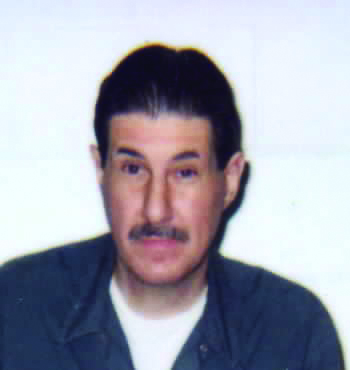
Marco Mura was recently released. He graduated as a PhD while in prison.
Vietnam: The Long Road To Freedom
An edited version of an article by Fr Bernardo Cervellera PIME of FIDES that appeared in
World Mission

Pope John Paul in Manila in 1995 called on all Asian Catholics to evangelize their continent, the one with the smallest percentage of Christians in the world. This invitation certainly involves the Philippines but also the 8,000,000 Catholics of Vietnam who form ten per cent of the population there, the third largest percentage in the continent.
The faith came to Vietnam about 400 years ago and 120,000 were martyred by 1700 for refusing to worship the Emperor. French missionaries encouraged literacy which facilitated relations with the international cultural community. A few years ago the government named a Hanoi street after French missionary Alexandre De Rhodes who gave the Vietnamese language its Roman form.
Catholics, though discriminated against, are still among the country’s most advanced scholars and writers. Especially in the South, universities were either Catholic or closely linked to the missionaries. Among the Catholics of Vietnam are Teresa Than, a pediatrician who is an advisor to the World Health Organization, and the simple Christians who spend whole days praying at the grotto of Our Lady at the national shrine of La Vang.
La Vang: A Moment of Truth
A clear manifestation of what Catholicism means for Vietnamese happened at La Vang on August 15, 1998. 200 years after Our Lady appeared there. 200,000 pilgrims from all over the country and from all social strata came to this little village in Central Vietnam, Prayer, tears, confession, begging for graces, mutual help: this is how they lived for three days. When the Hanoi government saw how this huge celebration had passed off in peace and order it expressed its appreciation for the witness and high civic sense of Vietnamese Catholics. Initially it had tried to block the affair.
A Church Close to the People
The presence at La Vang of many Muslims, Buddhists, Confucianists and animists was a sign that the Catholic Church interests the whole population. The designs of the altar, the podium, the statue of the Blessed Mother and the liturgical vestments were all inspired by the culture of Vietnam.
During the period of Communist domination, from 1954 in the North and 1974 in the South, the Church has responded to the needs of the people, even during persecution, caring for refugees, helping flood victims, providing medical care and education. Its social commitment has increased in proportion to the decline of the ideals of the Marxist regime and widespread general neglect, corruption and poverty. Catholics among northern tribal peoples offer free medical care to groups who live in the forest, abandoned by the government. Similar things happen in the cities. Medical care is very poor in contemporary Vietnam as a result of economic options based on ideology. Many religious sisters and Catholic laypeople visit and give medicine, both Western and traditional, to the sick, either free or at very low rates. One example is a convent of sisters, some preparing herbal remedies, some doing research, some praying for the sick, who ask patients to pay 1000 dong, about five pesos, to create a sense of responsibility among the 100 or so who arrive each day. Many with leprosy or tuberculosis get care only from Catholics with the help of some Buddhists.
Facing Modern Challenges
Since Vietnam began to open up in 1986 other needs have been felt, for example, the need for education and language study, and an adequate response to the general spiritual and moral vacuum. Though prohibited by law, Catholics have opened innumerable kindergarten, primary and professional schools, as well as institutes for computer and language studies. Because of the need they survive and sometimes local Communist party officials ask priests and sisters to establish these places.
Marxism led to a deep gap between generations and some Buddhists have asked Catholics to teach their children Catholic moral teaching such as love for the truth, personal responsibility, commitment and respect for parents. These were part of the Confucianist values underpinning Vietnamese society before. Nowadays many of the young are more fascinated by stylish clothes and drugs than the calls of filial piety.
With one quarter of the population below the poverty level and one fifth unemployed, more and more young boys and girls find themselves caught up in the “sex industry.” Harsher laws have not prevented the growth of this and it is reckoned that 10,000 Vietnamese girls under sixteen practice prostitution in neighboring Cambodia. The problem is not only economic but spiritual. Sisters in Ho Chi Minh City, for example, have a place to stay for girls caught up in prostitution.
On March 19, 1998, the then Prime Minister, Nguyen Tan Dung, made an extraordinary statement: “Karl Marx defined religions as the opium of the people, but with the use of drugs, prostitution and other plagues which have struck Vietnam, we say today that religion can give us a hand in getting out of this situation.” The Vietnamese Episcopal Conference had been underlining that it was precisely the religious policy of the government that had put the brakes on the service the Church could give to the nation.
The Pendulum of Control
The government’s policy towards religion and the Catholic Church swings back and forth. It appreciates the social function of religion but places every religious activity under the control of the police. Permission is needed to organize a parish choir or to print leaflets and catechisms. The government insists on approving the appointment of bishops. It must give permission for a young man to enter a seminary, to be ordained, for the printing of books, for changes in church personnel both within Vietnam and abroad. However, one Catholic in Hue showed how members of the Church deal with this: “We are like grass that grows in any crack that appears in the wall. If they don’t allow us to give our witness in one place, then we just set about flowering somewhere else.”
Signs of Change
A Vatican delegation in March 1999 found the Vietnamese keen to start moves towards establishing diplomatic relations with the Holy See. The usual problems surfaced at this meeting with members of the government: the appointment of bishops to ten vacant dioceses, the opening of new seminaries – many who want to be priests are not given permission to study – and a possible visit by the Pope to the country. However, the government’s control over bishops has decreased. Now they are free to travel around their dioceses to preach and to confirm without asking permission and without having to return to their residences every evening.
Government Under Pressure
Corruption in government and a desire for greater democracy are some of the factors sending shock waves through the leadership of the Communist Party. Some generals have torn up their membership cards and others have been expelled from the Party. Among these was General Tra Do who invited the Party to “either reform itself or die.” Another Party member was arrested for averring that the “Red capitalists are paradoxically protected by the dictatorship of the proletariat.” These are situations that push the government to seek new alliances and to reconstruct an acceptable moral image. Relations with the Church and with the Vatican could be seen as helping in this.
Economic Threat
The Asian economic crisis of recent years, along with legislative neglect and a closed attitude towards the international community, have meant a decrease of fifty percent in international investment in the country. Added to this is extreme poverty and unease among the people. A similar situation in Indonesia led to the fall of the dictator Suharto. There have been some cases of clashes between farmers and the forces of order. The Church has worked for peace and calm in these situations.
However, diplomatic relations have not yet been set up and a papal visit is not politically possible without that. The Vatican has made it clear that it is not a matter of seeking a few favors and privileges for Catholics, but of affirming freedom for all religions, and together with religious freedom, respect for civil rights.